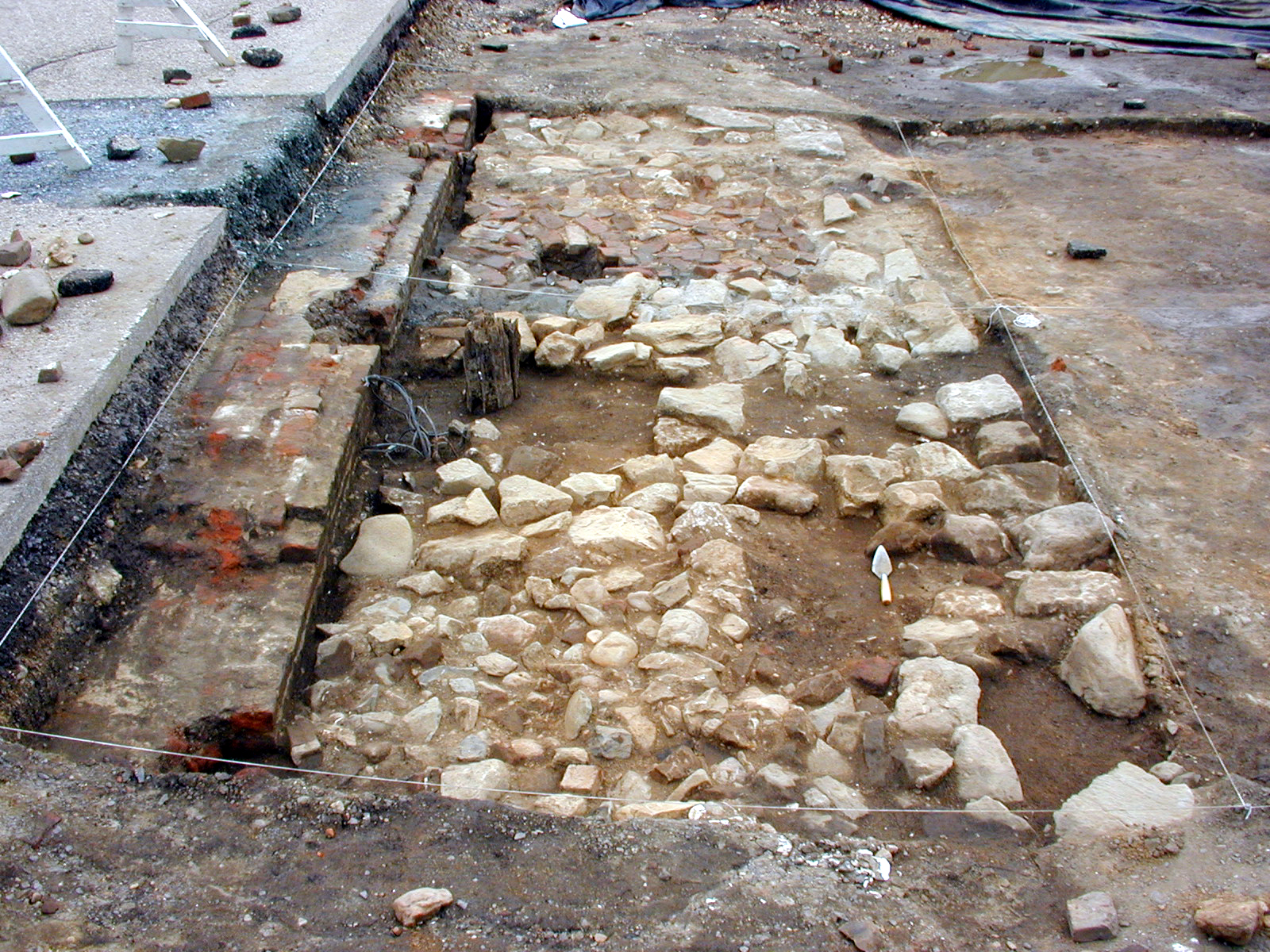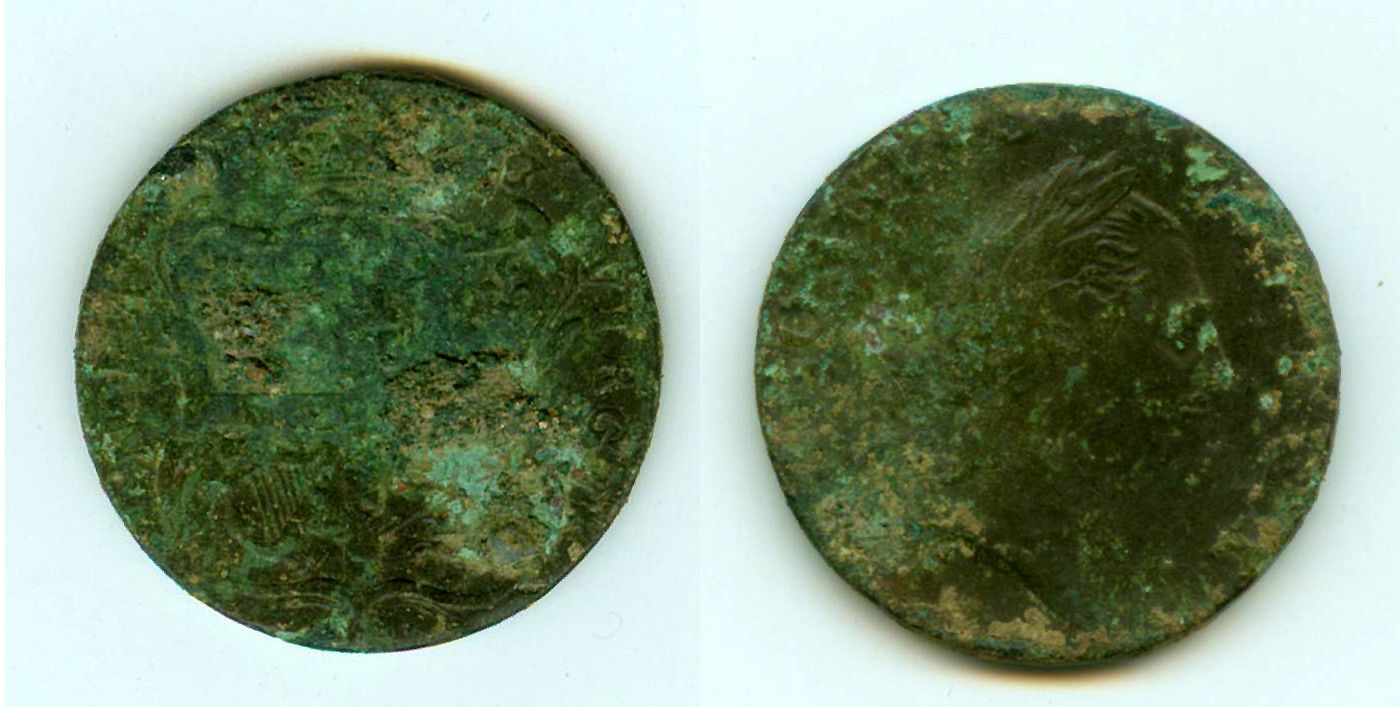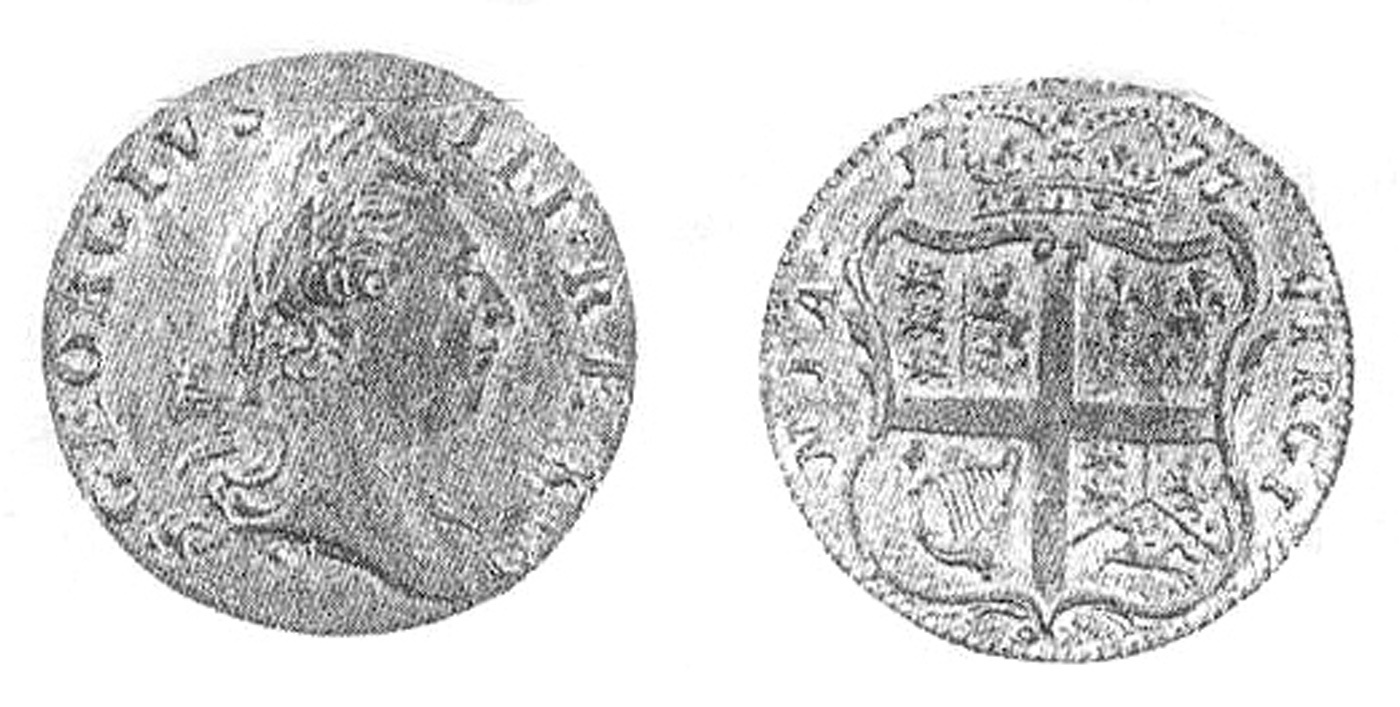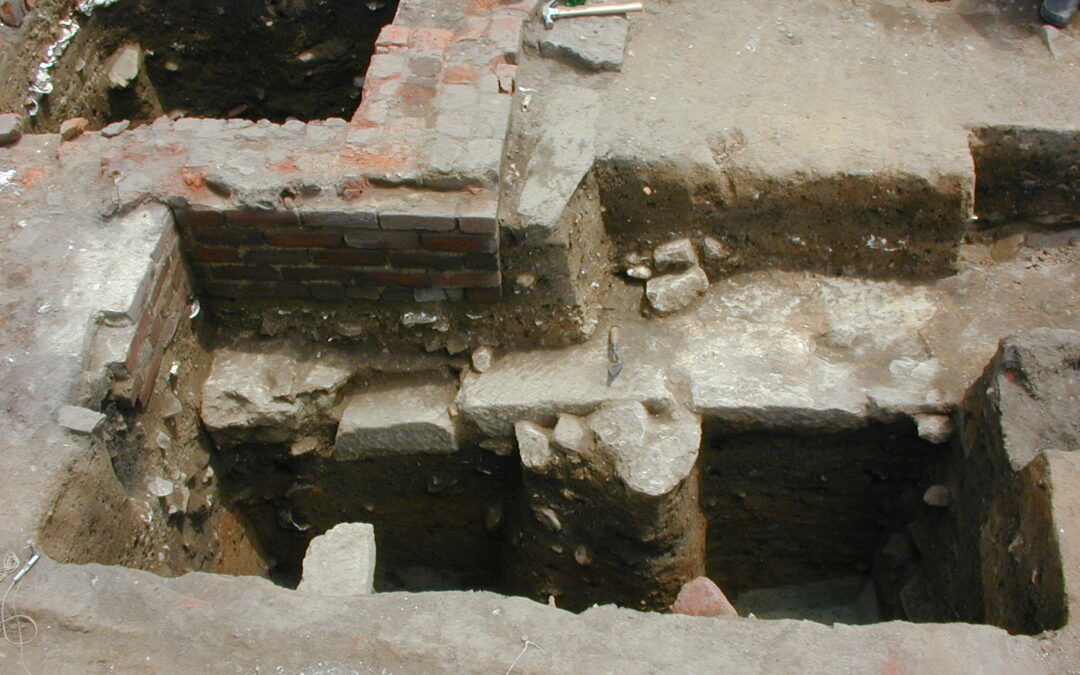By Kat Baganski
In 2006, in advance of construction of a new Marriott hotel in downtown Fredericksburg, Virginia, Dovetail Cultural Resource Group completed cultural resources investigations prior to construction and uncovered traces of a much earlier hotel, the Indian Queen. Before archaeological excavations began, documentary research suggested that beneath the extant parking lot chosen as the location for the new hotel, traces of an eighteenth-to nineteenth-century establishment with ties to the American Revolution might still be present. Archaeologists confirmed the location of the Indian Queen when excavations revealed the back wall of the hotel and a rear work yard.

View of the Indian Queen’s Foundation (Above) and the Tavern’s Rear Work Area (Below) During Archaeological Investigations.
The historic inn was established in 1771 as a hostelry by Jacob Whitely. Two years later, William Herndon purchased the business and renamed it the Indian Queen Tavern. For a time, the Indian Queen held the distinction of being Fredericksburg’s largest tavern and it remained in operation (later under the name the Indian Queen Hotel) until it burned to the ground in 1832 (Barile et al. 2008; Virginia Herald 1832). Due to its size and favorable location along the Philadelphia-Williamsburg postal route, the hotel existed as a popular meeting place and was patronized by many prominent families during its nearly 50 years in operation. Frequent visitors to the Indian Queen included the Washingtons, the Lees, and the Monroes (Barile et al. 2008). Other Revolutionary figures, including Thomas Jefferson and George Mason, were also known to frequent the hotel and even wrote the statute of religious liberty, a precursor to the Declaration of Independence, while staying at the Indian Queen (WPA 1937).
One of the more notable artifacts found was a 1773 copper half penny in excellent condition. The penny was found in the southeast corner of the proposed Marriott hotel site within a foot-thick layer of soil identified as part of the Indian Queen’s yard. Other artifacts found in the same context included ceramics and glassware associated with food preparation and dining, as well as personal items like tobacco pipes. The penny stands out within this assemblage because it was the first coin type minted that referred to Virginia as a state and the only coin with legal tender status minted for the American colonies. All other coins created for the American colonies prior to the Revolution are classified only as unofficial token money (Newman 1956). The dated coin also provides a terminus post quem, or date after which, that helps define the age of the soil deposits and archaeological materials.
This half penny was created in 1773 by Richard Yeo (circa 1720 to December 3, 1779), engraver at the Royal Mint and founding member of the Royal Academy (National Portrait Gallery 2024; Royal Academy 2024). Although little is known about Yeo’s early life, he gained recognition in the later 1730s when he was tasked with the creation of silver season tickets to the Vauxhall Pleasure Gardens. Yeo’s prominence grew in 1746 when he accepted a commission to create a commemorative medal celebrating the Duke of Cumberland’s victory over the Jacobites at the Battle of Culloden, with other notable medals to follow. In 1749, Yeo began his career as engraver (later, chief engraver) at the Royal Mint where he continued to work until his death (Royal Academy 2024).


Top Left: Coin Front; Top Right: Coin Reverse; Bottom: Sketch of Coin Stamp (Barile et al. 2008).

Recognizing a need for official coinage in the colonies, the Virginia Assembly authorized Yeo to strike a series of coins for circulation in Virginia including a half penny and prototypes of a penny and shilling (American Precious Metals Exchange [APMEX] 2022). A total of five long tons of half pennies, or about 672,000 coins, were purchased and delivered to the mouth of the York River in February 1774 (Bowers 1997:30). Several versions of the half penny exist with minor differences between them (APMEX 2022; Bowers 1997:31). The example from the Indian Queen Tavern features a left-facing laureate bust of King George III with the inscription “GEORGIVS · III · REX” on the front, while the reverse depicts the king’s heraldic shield surrounded by the inscription “1773 · VIRGINIA ·”. Although the coins had arrived in Virginia by early 1774, efforts to distribute the coins did not begin in earnest until late 1775 (Bowers 1997:30). By that time, existing wartime scarcities and increasing anxiety led to widespread hoarding of the new coins. Today, there are only 30 known examples of Yeo’s 1773 penny and a mere six of his shillings, but numerous half pennies exist in private collections, museums, and archaeological deposits yet to be unearthed (APMEX 2022). Thankfully, an early patron of the Indian Queen may have paid his bill with one of these unique coins, giving the archaeological team a “date” with destiny.
References
American Precious Metals Exchange (APMEX)
2022 Virginia Halfpennies – 1773-1774. Electronic document, https://learn.apmex.com/coin-guide/guide-to-colonial-values/virginia-halfpennies-1773-1774/, accessed September 2024.
Barile, Kerri S., Kerry Schamel-González, and Sean P. Maroney.
2008 “Inferior to None in the State”: The History, Archaeology, and Architecture of the Marriott Hotel Site in Fredericksburg, Virginia.” Dovetail Cultural Resource Group, Fredericksburg, Virginia.
Bowers, Q. David
1997 American Coin Treasures and Hoards and Caches of Other American Numismatic Items. Bowers and Merena, Wolfboro, New Hampshire.
National Portrait Gallery
2024 Richard Yeo. Electronic document, https://www.npg.org.uk/collections/search/person/mp04968/richard-yeo, accessed September 2024.
Newman, Eric P.
1956 Coinage for Colonial Virginia. Numismatic Notes and Monographs, No. 135. American Numismatic Society, New York.
Reynolds, Sir Joshua
1723-1792 Portrait of Richard Yeo, half-length, in a brown coat, seated at work with a medal on the table, oil on canvas, 77.8 x 62.3cm (30 5/8 x 24 1/2in), Bonhams, Old Master Paintings, Lot 11, https://www.bonhams.com/auction/28250/lot/11/sir-joshua-reynolds-plympton-1723-1792-richmond-portrait-of-richard-yeo-half-length-in-a-brown-coat-seated-at-work-with-a-medal-on-the-table/, accessed September 2024.
Royal Academy
2024 Richard Yeo RA (ca. 1720 – 1779). Electronic document, https://www.royalacademy.org.uk/art-artists/name/richard-yeo-ra, accessed September 2024.
Virginia Herald
1832 Fire! April 28, 1832. Page 3, column 1.
Works Progress Administration Inventory (WPA)
1937 Cassiday’s Drug Store, formerly known as Indian Queen Tavern. Volume I, pp. 206–210. On file, Central Rappahannock Regional Library, Fredericksburg.

